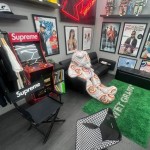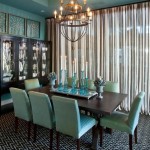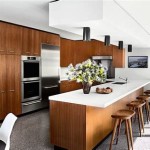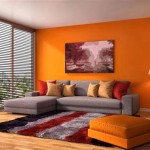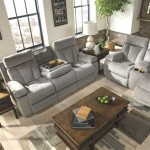Types of Decor Themes
Selecting a decor theme is a crucial initial step in any interior design project, influencing the overall aesthetic and atmosphere of a space. A well-chosen theme provides a framework for selecting furniture, color palettes, textures, and accessories, resulting in a cohesive and visually appealing environment. The following provides a comprehensive overview of various decor themes, highlighting their key characteristics and elements.
### Understanding the Importance of Decor ThemesA decor theme is more than just a stylistic preference; it's a foundational principle that dictates the direction of a design project. Themes offer a unified approach, ensuring that individual elements complement each other and contribute to a harmonious whole. Without a clear theme, a space can easily become cluttered and disjointed, lacking a sense of purpose and visual flow. Furthermore, a carefully selected theme can reflect the personality and lifestyle of the inhabitants, creating a space that is both aesthetically pleasing and personally meaningful.
Decor themes can range from broad stylistic movements, such as Mid-Century Modern or Art Deco, to more specific and personalized concepts, like a coastal retreat or a minimalist urban loft. The choice of theme depends on various factors, including the architectural style of the building, the available space, personal preferences, and budgetary constraints. Regardless of the specific theme selected, consistency in its application is essential for achieving a successful and visually coherent design.
The process of choosing a decor theme often begins with identifying personal preferences and lifestyle needs. Considering how the space will be used, who will be using it, and what kind of atmosphere is desired are crucial aspects of the decision-making process. Inspiration can be drawn from various sources, including magazines, online platforms, travel experiences, and even personal hobbies. The key is to identify elements that resonate with individual tastes and can be translated into a cohesive design concept.
### Exploring Popular Decor ThemesThe world of interior design offers a diverse array of decor themes, each with its unique characteristics and appeal. Some of the most popular and enduring themes include:
1. Modern: Characterized by clean lines, minimalist aesthetics, and a focus on functionality, the modern decor theme emphasizes simplicity and sophistication. Neutral color palettes, such as whites, grays, and beiges, are often used as a backdrop, with pops of color introduced through artwork or accessories. Materials like stainless steel, glass, and concrete are commonly incorporated, reflecting the industrial influences of the movement. Furniture typically features streamlined silhouettes and geometric shapes, avoiding excessive ornamentation. Open floor plans and ample natural light are also hallmarks of modern design.
2. Contemporary: Often confused with modern design, contemporary decor is more fluid and adaptable, reflecting the current trends and styles. While it shares some characteristics with modern design, such as clean lines and minimalist aesthetics, contemporary decor allows for more experimentation and incorporates elements from various other styles. Color palettes can be more diverse, ranging from neutral tones to bold and vibrant hues. Textures play an important role in contemporary design, with the use of materials like velvet, leather, and natural wood adding depth and visual interest. The emphasis is on creating a space that is both stylish and functional, reflecting the evolving nature of design trends.
3. Mid-Century Modern: This theme draws inspiration from the design movement of the mid-20th century, characterized by its organic shapes, clean lines, and use of natural materials. Furniture often features tapered legs, rounded edges, and a minimalist aesthetic. Warm wood tones, such as walnut and teak, are frequently incorporated, creating a sense of warmth and sophistication. Color palettes typically include earthy tones, muted greens, and pops of vibrant colors like orange and yellow. Mid-Century Modern design emphasizes functionality and simplicity, creating spaces that are both stylish and comfortable.
4. Industrial: This theme celebrates raw materials, exposed architectural elements, and a utilitarian aesthetic. Exposed brick walls, concrete floors, and exposed pipes are common features of industrial design. Furniture often features metal accents, reclaimed wood, and a sturdy, functional design. Color palettes typically include neutral tones, such as grays, browns, and blacks, with pops of color introduced through artwork or accessories. Industrial design emphasizes the beauty of raw materials and the functionality of space, creating a unique and edgy atmosphere.
5. Bohemian: Characterized by its eclectic mix of colors, patterns, and textures, the bohemian decor theme embraces individuality and creativity. Layering is a key element of bohemian design, with the use of rugs, pillows, and throws creating a cozy and inviting atmosphere. Vintage furniture, handcrafted items, and globally sourced textiles are often incorporated, reflecting a love of travel and cultural diversity. Color palettes can be vibrant and bold, featuring a mix of jewel tones and earthy hues. Plants play an important role in bohemian design, adding a touch of nature and creating a sense of tranquility.
6. Scandinavian: This theme is characterized by its simplicity, functionality, and emphasis on natural light. White walls, wood floors, and minimalist furniture are common features of Scandinavian design. Color palettes typically include neutral tones, such as whites, grays, and beiges, with pops of color introduced through textiles and accessories. Natural materials, such as wood, wool, and linen, are frequently incorporated, creating a sense of warmth and comfort. Scandinavian design emphasizes creating a space that is both beautiful and functional, promoting a sense of well-being and tranquility.
7. Coastal: Evoking the atmosphere of the beach and the ocean, the coastal decor theme features light and airy color palettes, natural materials, and nautical accents. Whites, blues, and greens are common colors used, creating a sense of serenity and relaxation. Furniture often features natural materials like rattan, wicker, and driftwood. Seashells, starfish, and other nautical elements are used as decorative accents, adding a touch of coastal charm. Coastal design emphasizes creating a space that is both refreshing and inviting, reminiscent of a seaside escape.
8. Farmhouse: This theme combines rustic charm with modern comfort, creating a warm and inviting atmosphere. Natural wood, shiplap walls, and vintage furniture are common features of farmhouse design. Color palettes typically include neutral tones, such as whites, creams, and grays, with pops of color introduced through textiles and accessories. Farmhouse design emphasizes creating a space that is both functional and stylish, reflecting a love of simplicity and tradition.
### Key Considerations When Choosing A Decor ThemeSelecting the right decor theme involves careful consideration of several important factors to ensure a successful and satisfying outcome.
1. Architectural Style: The existing architectural style of the building plays a significant role in determining the suitability of different decor themes. A Victorian-era home, for example, may be better suited to more traditional themes, while a modern apartment may lend itself well to minimalist or contemporary designs. Trying to force a decor theme that clashes with the architectural style can result in a disjointed and visually unappealing space. Therefore, it's important to consider the existing architectural features and choose a theme that complements and enhances them.
2. Personal Preferences and Lifestyle: Ultimately, the decor theme should reflect the personal preferences and lifestyle of the inhabitants. It's crucial to choose a theme that resonates with individual tastes and creates a space that is both comfortable and functional. Consider how the space will be used, who will be using it, and what kind of atmosphere is desired. A family with young children, for example, may prioritize durability and ease of maintenance, while a single professional may prefer a more sophisticated and minimalist design. The chosen theme should cater to these specific needs and preferences, creating a space that is truly personalized and tailored to individual requirements.
3. Budget and Resources: The budget available for the project is a significant factor in determining the feasibility of different decor themes. Some themes, such as luxurious Art Deco or elaborate Victorian designs, can be quite expensive to implement, while others, such as minimalist or Scandinavian themes, can be more budget-friendly. It's important to assess the available resources and choose a theme that can be realistically achieved within the given budget. Consider the cost of furniture, materials, accessories, and labor, and prioritize elements that are essential to the chosen theme.
4. Space and Layout: The size and layout of the space also play a crucial role in determining the suitability of different decor themes. A small apartment, for example, may benefit from a minimalist or Scandinavian theme, which emphasizes simplicity and maximizes space. A large, open-plan home, on the other hand, may be better suited to more expansive and elaborate themes, such as Bohemian or Industrial. Consider the flow of the space, the amount of natural light available, and the existing furniture and fixtures when choosing a theme. The chosen theme should complement the existing space and enhance its overall functionality and aesthetics.
5. Color Palette and Materials: The color palette and materials used in a decor theme are essential to creating the desired atmosphere and visual impact. Different themes utilize different color palettes and materials, ranging from neutral tones and natural materials in Scandinavian design to bold colors and metallic accents in Art Deco. Consider the desired mood and atmosphere when selecting a color palette and materials. Warm colors, such as reds and oranges, can create a sense of warmth and energy, while cool colors, such as blues and greens, can create a sense of calm and tranquility. Natural materials, such as wood and stone, can add warmth and texture, while synthetic materials, such as plastic and metal, can add a modern and industrial touch. The chosen color palette and materials should be cohesive and complement the overall theme, creating a visually appealing and harmonious space.
By carefully considering these factors, individuals can make informed decisions about selecting a decor theme that aligns with their personal preferences, lifestyle needs, and practical constraints. The goal is to create a space that is not only aesthetically pleasing but also functional, comfortable, and reflective of individual personality.

14 Interior Design Themes That Are On Trend Wall Art Prints

Interior Design Styles Guide To Top Decor Types Lazy Loft

10 Home Decor Themes You Ll Love And How To Pick One Bay

14 Interior Design Themes That Are On Trend Wall Art Prints

18 Diffe Types Of Living Room Styles Ilrated Design Guide

14 Interior Design Themes That Are On Trend Wall Art Prints

Diffe Interior Design Styles Types Of Home Décor

14 Interior Design Themes That Are On Trend Wall Art Prints

Trending Interior Design Themes For Your Home Beautiful Homes

14 Interior Design Themes That Are On Trend Wall Art Prints
